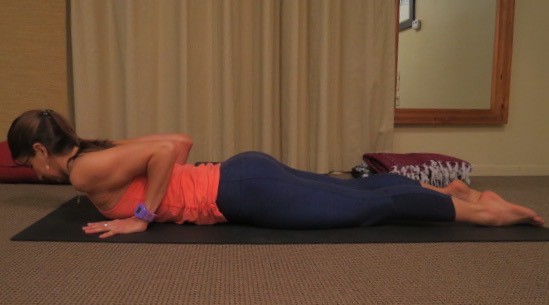Effective exercise programs and results-oriented physical therapy are rooted in functional movement—the real-world biomechanics that allow you to move your body with proper muscle and joint function for effortless, pain-free activity ranging from carrying groceries or lifting a child to getting out of bed.
One popular yoga exercise called the Cobra is a great example of a functional exercise, because it targets key muscles and body alignment cues that can help transition from floor to standing without injury.
The key to a safe and effective Cobra is starting with a neutral alignment and first engaging the deep muscle system in your trunk before you push into your hands. This allows your stabilizing muscles to keep your ribs and shoulder blades in place as you push to hands and knees during transition to downward dog in a yoga class, or any time you move from the floor to standing.

Start Position

Full Cobra
Lay on your stomach with elbows bent and hands flat on floor just to sides of lower rib cage. Keep your fingers spread wide, elbows in toward body, hips in neutral, and glute muscles relaxed. Your spine is in extension without tensing gluteus maximus or compressing low back—keep hips in neutral so knees point toward the floor. Keep the quads engaged and reaching along the mat, gently pressing the tops of the feet into the floor.
Entry: Inhale, keep elbows drawn into the sides, chest open and shoulders away from the ears while you engage the transversus abdominis, obliques, and back muscles together to raise ribs off floor. Keep head and neck in neutral, gently press into hands, and continue to press the chest up while leaving the pelvis on the floor. Hold for 3-5 breaths. Repeat up to 5 repetitions.
Transitioning to hands and knees: Keep core muscles engaged as above, elbows in at sides and shoulder blades down and relaxed (don’t let them move up toward your ears) and press the chest away from the floor to hands and knees or to plank.
Modifications: Place block between the thighs or heels to assist in engaging deep core stabilizers and keep legs in neutral alignment.
*For more information on neutral body alignment, review our February 5 blog article.

Comments